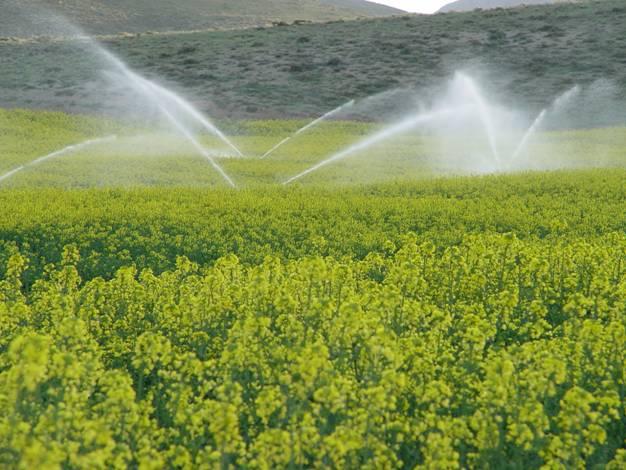نگهداری و بهره برداری درست از سیستم های آبیاری تحت فشار یکی از موضوعاتی است که در سال های اخیر در مجامع علمی مورد توجه قرار گرفته است. لذا شناساندن فواید کاربردی آن در راستای افزایش بهره وری محصولات کشاورزی و بالا بردن عمر مفید سیستم و کاهش منابع آبی امری ضروری است .
بدیهی است عملیات نگهداری، بازرسی و انجام تعمیرات به موقع شبکه آبیاری تحت فشار در طول فصل آبیاری و دوره استراحت از اولویت خاصی برخوردار است. چنانچه عملیات نگهداری از سیستم آبیاری تحت فشار به درستی صورت نگیرد، طرح های آبیاری کارایی خود را از دست می دهند.
عملیات نگهداری شامل انجام یک سلسله عملیات اجرایی و تعمیراتی است به منظور فعال نگاه داشتن شبکه آبیاری تحت فشار. این عملیات شامل تعمیر و نگهداری از ایستگاه پمپاژ که خود شامل پمپ و تاسیسات مکانیکی و برقی ایستگاه پمپاژ، خط لوله آبرسانی و توزیع آب، کلیه شیر آلات و تجهیزات به کار رفته در طول خطوط می باشد. همچنین بخشی از به تعمیرات اتصالات به کار رفته شامل لوله و آبپاش ها می باشد. بخشی از عملیات مذکور می تواند به صورت سالیانه، فصلی و یا مستمر بسته به ضرورت انجام گردد.
نگهداری مناسب، با توصیه کارشناس طرح، موجب طولانی تر شدن عمر وسایل و تجهیزات آبیاری می شود و موجب کاهش هزینه سالانه قابل توجهی می گردد.

۱۰ نکته در مورد نگهداری و حفاظت از سیستم آبیاری بارانی:
۱- بازدید مداوم از اجزا سیستم ضروری است و تعمیرات یا تعویض قطعات آسیب دیده یا فرسوده را باید به موقع انجام داد.
۲- بایستی از ورود مواد زاید به داخل لوله های اصلی و جانبی به هر وسیله ممکن از جمله نصب توری در اطراف محل آبگیری جلوگیری نمود.
۳- لوله های زیر خاک از هر جنس که باشند بایستی حتی الامکان بعد از اتمام کار از آب تخلیه شوند.
۴- در صورتیکه به هر دلیل به ناچار بعضی از آبپاش ها حذف شده باشند، باعث افزایش فشار در سیستم می گردد، در نتیجه آب بیش از حد به صورت پودر پخش می شود لذا بایستی با استفاده از شیر فلکه فشار را تا حدودی کاهش داد.
۵- تجمع شن وماسه و مواد زاید در اطراف آبپاش باعث جلوگیری از چرخش آبپاش و یا کاهش سرعت آن می گردد. در این حالت با تکان دادن آبپاش به سمت بالا و پایین می توان مشکل را برطرف نمود.
۶- زمانی که در آبیاری نباتات ساقه بلند مانند ذرت، رایزر های ۲ متری روی شیر خودکار بکار می رود بایستی از سه پایه استفاده کرد.
۷- با شروع فصل آبیاری بایستی لوله های اصلی را سریع شستشو داده و از عدم گرفتگی آن ها اطمینان حاصل کرد.
۸- اگر برای پخش کود یا سم از سیستم استفاده می شود، بعد از پایان کار باید لوله ها و آبپاش ها شستشو شوند و جهت جلوگیری از هر گونه آلودگی، از برگشت آب آلوده به محل آبگیری خودداری نمود.
۹- در زمان نگهداری، لوله ها و اتصالات در مکانی مناسب سرپوشیده قرار گرفته شوند و نبایستی در مجاورت اسید، سموم و کودهای شیمیایی و یا در تماس با کودها و مواد زاید حیوانی قرار گیرد.
۱۰- در حال حاضر همه مسیولین زارعین و باغداران به این مسیله واقف شده اند که استفاده از روش های آبیاری تحت فشار مناسب ترین روش آبیاری است. اما چنانچه بهره برداران اطلاعات کافی از نحوه کار سیستم و نگهداری و یا مزایای آن نسبت به سایر روش ها نداشته باشند با بهره برداری غلط از سیستم تحت فشار دچار ضرر و زیان سنگینی می گردند.